Voice over Internet Protocol (VoIP) systems have become integral to modern business operations, offering unmatched flexibility, significant cost savings, and seamless scalability. However, to truly harness the full potential of VoIP, businesses must go beyond basic usage and fully leverage the rich analytics these systems provide. By using VoIP analytics, organizations can make data-driven decisions that not only enhance performance and operational efficiency but also improve customer satisfaction and overall business outcomes.
Understanding VoIP Analytics
VoIP analytics involves the systematic collection, monitoring, and interpretation of communication data generated by VoIP systems. Key metrics that organizations should focus on include:
- Call Volume and Duration – Tracks the number and length of calls to better assess workload, staffing needs, and resource allocation.
- Call Quality Metrics – Measures jitter, latency, packet loss, and other technical factors that impact audio clarity and overall communication quality.
- Response and Hold Times – Evaluates customer service efficiency and highlights potential workflow bottlenecks.
- Customer Sentiment and Feedback – Monitors satisfaction through call outcomes, surveys, or advanced sentiment analysis to provide actionable insights.
Analyzing these metrics provides a comprehensive view of both operational performance and customer experience, helping businesses identify trends, uncover inefficiencies, and implement proactive improvements that drive measurable results over time.
Key Benefits of VoIP Analytics
1. Enhancing Customer Experience
A seamless and consistent customer experience is one of the most important competitive differentiators in today’s market. VoIP analytics allows businesses to:
- Monitor call quality in real-time, quickly identifying and resolving issues like dropped calls or poor audio clarity.
- Track response times, first-call resolution rates, and follow-up efficiency to improve overall service delivery.
- Analyze customer sentiment to understand pain points and continuously refine interactions.
Example: A support center notices repeated latency issues in calls from a specific region. By using analytics to identify and address the network problem, the team improves the customer experience proactively, reducing complaints and increasing satisfaction.
2. Optimizing Resource Allocation
VoIP data offers critical insights into communication patterns, revealing peak activity times and overall call volumes. This data allows businesses to make smarter staffing and resource decisions:
- Align workforce scheduling with periods of high demand to reduce wait times and improve responsiveness.
- Identify over- or under-utilized employees to balance workloads and optimize team efficiency.
- Reduce operational costs by avoiding overstaffing during low-activity periods.
Example: Analytics show that 40% of inbound calls occur between 10 AM and 1 PM. Managers adjust shift schedules to ensure adequate coverage, improving service without increasing labor costs.
3. Improving Agent Performance
Monitoring performance is critical to both individual and team productivity. VoIP analytics provides detailed insights into agent activity, including:
- Average handling time and call resolution rates per agent.
- Patterns in missed calls, escalations, or recurring issues.
- Opportunities for targeted coaching, training, and skill development.
Example: Analytics reveal that one agent consistently takes longer to resolve calls. Management provides targeted training, resulting in faster resolution times and improved overall team performance.
4. Informing Strategic Decisions
Long-term trends identified through VoIP analytics provide a solid foundation for data-driven strategic decision-making:
- Expansion into new markets or regions can be informed by call volume and customer demand data.
- Service offerings can be adjusted based on recurring customer inquiries or frequently asked questions.
- Investment decisions in technology upgrades or additional features are made using concrete insights.
Example: A company detects frequent customer calls regarding product compatibility issues. Management uses this information to improve product documentation, reducing inbound support calls and enhancing overall customer satisfaction.
5. Enhancing Security and Compliance
VoIP analytics also plays a crucial role in safeguarding business communications and ensuring regulatory compliance:
- Detect unusual call patterns that could indicate potential fraud or security breaches.
- Maintain detailed records to comply with industry regulations and audits.
- Monitor user access and activity to prevent unauthorized system use or data leaks.
Example: A sudden spike in international calls triggers a security review, preventing potential fraud and avoiding financial losses.
Implementing VoIP Analytics Effectively
To maximize the benefits of VoIP analytics, businesses should adopt a structured approach:
- Choose the Right VoIP Provider – Select a provider with robust analytics capabilities and seamless integration with existing business systems.
- Define Key Performance Indicators (KPIs) – Identify metrics that align directly with your business objectives, such as call quality, first-call resolution, and customer satisfaction scores.
- Regularly Monitor and Review Data – Continuously track trends and insights to identify inefficiencies and uncover opportunities for improvement.
- Train Teams to Use Analytics – Ensure employees know how to interpret data and apply it in daily workflows and decision-making.
- Invest in Continuous Improvement – Use insights gained from analytics to refine processes, train staff, and optimize system performance.
Embedding analytics into daily operations helps create a culture of data-driven decision-making, driving continuous improvement across the organization.

Real-World Applications of VoIP Analytics
- Call Centers: Track average response times, missed calls, and call resolution metrics to optimize staffing, training, and overall performance.
- Sales Teams: Analyze call patterns, conversion rates, and outreach effectiveness to identify high-performing strategies and refine sales tactics.
- Customer Support: Monitor call sentiment and quality to proactively address recurring issues and improve satisfaction levels.
- Remote Workforces: Evaluate engagement, connectivity, and productivity metrics to ensure distributed teams operate efficiently across locations.
Future Trends: AI and VoIP Analytics
Emerging technologies like artificial intelligence (AI) and machine learning are reshaping VoIP analytics:
- Predict future call volume trends using historical data.
- Automatically flag anomalies or suspicious patterns for fraud detection.
- Provide real-time insights and actionable recommendations to agents during calls.
Integrating AI into VoIP analytics allows businesses to anticipate challenges, optimize operations, and deliver superior customer experiences more efficiently than ever before.
Leveraging Real-Time Analytics for Immediate Insights
Real-time VoIP analytics enables organizations to monitor communication systems as events occur, allowing immediate action:
- Instantly detect call quality issues such as latency or dropped connections.
- Troubleshoot proactively before issues impact customer satisfaction.
- Adjust workforce allocation dynamically during peak periods.
- Identify unusual patterns that may indicate security risks or operational inefficiencies.
By acting on real-time insights, businesses can prevent minor issues from escalating, ensuring smooth operations and maintaining a high standard of service.
Integrating VoIP Analytics with CRM and Business Tools
Combining VoIP analytics with Customer Relationship Management (CRM) and other business tools amplifies its value:
- Link call data to customer profiles for richer insights into behavior and preferences.
- Automate workflows, such as follow-up communications or task assignments.
- Provide sales and support teams with a complete view of customer interactions.
- Track the impact of communication efforts on revenue, retention, and satisfaction.
This integration ensures analytics actively drives informed business decisions, rather than remaining isolated in a single system.
Using Historical Data to Identify Trends and Forecast Needs
Historical VoIP data provides valuable insights for strategic planning and accurate forecasting:
- Predict future call volumes and resource requirements to prevent staffing shortages and avoid overloading teams during peak periods.
- Identify recurring customer issues that need process improvements, helping to streamline workflows and reduce repetitive queries.
- Measure long-term performance trends for agents and teams, enabling targeted coaching and training initiatives.
- Forecast infrastructure upgrades or expansions based on usage patterns, ensuring your systems scale efficiently with business growth.
- Analyze seasonal or cyclical trends in communication patterns to prepare for fluctuations in demand, improving operational resilience.
By analyzing historical data, businesses can plan proactively, make informed decisions, allocate resources more efficiently, and optimize operations over time, ultimately improving customer satisfaction and employee productivity.
Custom Reporting and KPIs for Strategic Decision-Making
VoIP analytics is most effective when tailored to an organization’s specific goals and priorities:
- Track the metrics that matter most, such as average call duration, hold times, customer satisfaction scores, and agent efficiency.
- Generate executive dashboards and visual reports for quick, data-driven decision-making across departments.
- Identify inefficiencies and areas that require process improvement, allowing for iterative enhancements in workflows.
- Set benchmarks and measure progress against objectives, enabling organizations to monitor both short-term and long-term performance.
- Use insights from reporting to align communication strategies with broader business goals, improving both customer experience and operational effectiveness.
By aligning KPIs with business objectives, VoIP analytics becomes a powerful tool for continuous improvement, operational excellence, and measurable business growth.

Supporting Remote and Hybrid Workforces
As remote and hybrid work models continue to grow, VoIP analytics plays a crucial role in maintaining productivity, engagement, and service quality:
- Monitor remote employee call activity, response times, and workload distribution to ensure teams remain efficient and accountable.
- Identify connectivity or device-related issues that could impact performance, enabling proactive troubleshooting before problems escalate.
- Ensure remote teams collaborate effectively with colleagues and customers, keeping communication seamless despite physical distance.
- Maintain consistently high standards of service regardless of location, supporting both employee satisfaction and customer experience.
- Leverage analytics to track engagement trends, highlight training opportunities, and identify gaps in workflow, helping managers optimize distributed operations.
Analytics provides managers with comprehensive visibility into distributed workforces, allowing them to support employees effectively, ensure operational continuity, and maintain high performance standards across all teams.
Unlocking the Full Potential of VoIP Analytics
VoIP analytics transforms communication systems from a basic utility into a strategic business tool. By leveraging data insights, organizations can:
- Enhance customer experience
- Optimize resource allocation
- Improve agent performance
- Make informed strategic decisions
- Strengthen security and compliance
Adopting a structured approach to VoIP analytics empowers businesses to reduce inefficiencies, make better decisions, and achieve measurable outcomes. In today’s highly connected and competitive world, leveraging insights from VoIP systems is no longer optional; it is essential for sustainable growth, operational efficiency, and long-term success.



Recent Comments